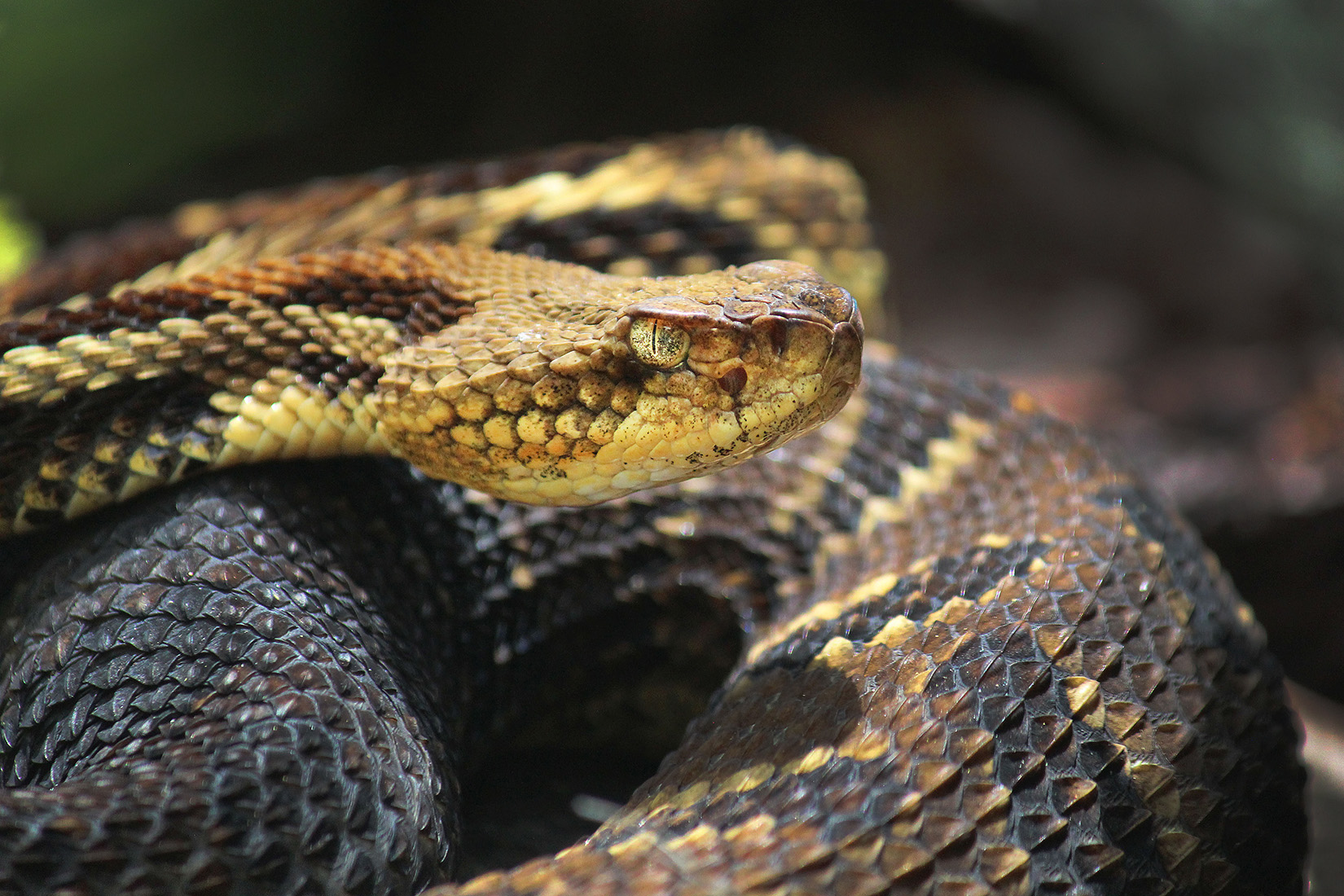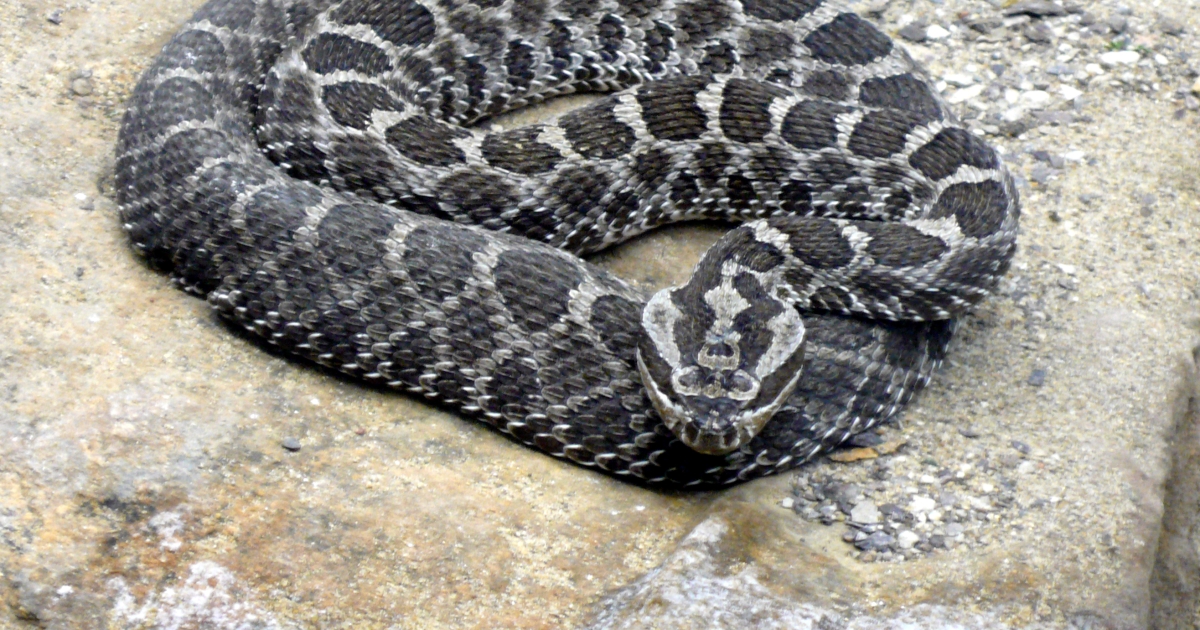Rattlesnakes are a type of venomous snake that can be found in many parts of the world, including the United States. In New York, there are two types of rattlesnakes: the Timber Rattlesnake and the Eastern Massasauga Rattlesnake.
Both of these snakes are venomous and should be treated with caution. In this article, we will explore the characteristics and habitats of these two types of rattlesnakes found in New York.
You are reading: Discover The 2 Types Of Rattlesnakes In New York

2 Types Of Rattlesnakes In New York
Timber Rattlesnake

Read more : Top 9 Most Dangerous Insects In The World
The Timber Rattlesnake is a venomous pit viper native to North America. It is the largest venomous snake in New York, measuring from 3 to 4 feet or more in length. Here are some interesting facts about the Timber Rattlesnake:
Appearance and Habitat
– Timber rattlesnakes have a large, heavy-bodied appearance, with adults typically reaching lengths of 2.5-5 feet (.76-1.5 meters), but there are reports of timber rattlesnakes growing up to 7 feet (2 meters) long.
– They have two color phases, yellow (which can also appear light brown or gray) with dark bands, and black with less noticeable dark bands.
– Timber rattlesnakes have a wide distribution across the eastern half of the United States, including New York.
– They live in a variety of habitats, including mountainous or hilly forests, hardwood or pine forests, swamps and river floodplains, lowland cane thickets, and agricultural fields.
Behavior and Diet
– Timber rattlesnakes are almost entirely terrestrial rather than arboreal, however, they are excellent climbers.
– They use chemical cues to find sites to ambush their prey and will often strike their prey and track them until they can be consumed.
– Timber rattlesnakes usually hide in fallen logs waiting for prey to pass by, giving them an elevated perch from which to effectively strike their prey.
– These snakes can be active both during the day and at night.
– They are carnivorous and mostly prey on small mammals such as mice, voles, and shrews. They will also feed on birds, amphibians, reptiles, and even invertebrates like insects.
– Females often bask in the sun before giving birth, in open rocky areas known as “basking knolls”.
Conservation Status
– As of a 2007 analysis, timber rattlesnakes are listed as a species of least concern on the International Union for Conservation of Nature’s Red List.
– However, their numbers appear to be decreasing throughout most of their natural range, and they often fall victim to habitat loss and road accidents.
– In some areas of the northeast, timber rattlesnakes have declined dramatically and they are protected in several states.
Eastern Massasauga Rattlesnake

The Eastern Massasauga Rattlesnake (Sistrurus catenatus) is a small pit viper that occurs in the northern Midwest United States and Ontario, Canada. Here are some interesting facts about the Eastern Massasauga Rattlesnake:
Appearance and Habitat
– The Eastern Massasauga Rattlesnake is a small to medium-sized snake, with adult lengths averaging 2 to 3 feet. The average length is 27.5 inches.
– They are gray or grayish-brown with dark blotches edged in white and spots down their back and sides.
– The Eastern Massasauga Rattlesnake is primarily associated with wetland habitats, but some populations also utilize adjacent upland habitats for parts of its life history.
– They are found in wet prairies in the west and bogs and swamps in the east.
Behavior and Diet
– The Eastern Massasauga Rattlesnake is a timid snake and will typically remain motionless when threatened, relying on its cryptic coloration to blend into its surroundings.
– They sound their rattle when alarmed but will occasionally strike without rattling when surprised.
– The rattle sound of the Eastern Massasauga Rattlesnake is different than the traditional sound of other rattlesnake species. It is best described as a buzzing sound, similar to one made by a bee stuck in a spider web.
– They are carnivorous and feed on small mammals, such as mice and voles, as well as birds, amphibians, reptiles, and even invertebrates like insects.
Conservation Status
– The Eastern Massasauga Rattlesnake is listed as an endangered species in New York State.
– The snake has declined from 19 populations in six counties to only four isolated populations in Butler and Venango counties in Western Pennsylvania.
– Habitat loss and fragmentation, as well as persecution by humans, are the primary threats to the Eastern Massasauga Rattlesnake.
FAQS
1. Are both types of rattlesnakes venomous?
Yes, both the Timber Rattlesnake and the Eastern Massasauga Rattlesnake are venomous. It is important to treat them with caution and respect their habitat.
2. Where can I find these rattlesnakes in New York?
Read more : Top 10 Stunning Red Animals
Timber Rattlesnakes are found in isolated or semi-isolated populations in southeastern New York, the southern tier, and the peripheral eastern Adirondacks. Eastern Massasauga Rattlesnakes are found in wetlands across most of their range, with wet prairie being the preferred habitat in the west, and bogs and swamps in the east.
3. How big do these rattlesnakes get?
The Timber Rattlesnake is the largest venomous snake in New York, measuring from 3 to 4 feet or more in length. The Eastern Massasauga Rattlesnake is the smallest of the three venomous snakes found in New York State, measuring 18-40 inches in length.
4. Are these rattlesnakes endangered?
The Eastern Massasauga Rattlesnake is an endangered species in New York State[3]. The Timber Rattlesnake population has severely declined in numbers and distribution (about 50-75%) in New York State due to unregulated collection, indiscriminate killing, and habitat destruction.
5. What should I do if I encounter a rattlesnake?
If you encounter a rattlesnake, it is important to give it space and avoid disturbing it. Do not attempt to handle or kill the snake. If you are in a public area, notify park staff or local authorities. Remember, rattlesnakes play an important role in the ecosystem and should be respected and protected.
Source: https://petstutorial.com
Category: Animals










